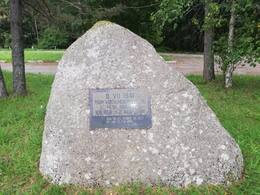Destruction Battalions II WW2, IV Soviet Occupation
Destruction battalions in Estonia were formed during the Soviet occupation in 1941 and from 1944 to 1954 as armed internal security units of volunteers.
Destruction battalions were formed after the German invasion of the Soviet Union in the Western regions of the Soviet Union where martial law was declared. People's Commissariat for Internal Affairs (NKVD) units of 100 to 200 men were tasked with maintaining order in the rear of the Red Army and suppress any occurrences of resistance across the lands annexed in 1939 and 1940. Their main focus was battling Forest Brothers and Omakaitse and implementing the scorched earth strategy, aiming to destroy anything that might be useful to the enemy and that Soviet authorities couldn't evacuate during their retreat.
The destruction battalion organisation was restored on 20 April 1944 by decree of the Estonian Communist Party Central Committee Bureau. These battalions formed local volunteer units for every county tasked with assisting security authorities and troops and guarding various sites. In its heyday, the organisation comprised around 7000 members, most of them locals. Members had bad morale, were poorly trained and ultimately did not turn out to be the counterforce against the Forest Brothers that was anticipated of them. From 1944 to 1951, an estimated 173 members of the destruction battalions died, most of them in skirmishes with the Forest Brothers. 32 died carrying out their own operations.
The Estonian people remember the destruction battalions first and foremost for extensively terrorising civilians, treating them as collaborators with the Forest Brothers.
Related objects
Timmkanal battle site
On 4 July 1941, Forest Brothers stormed the executive committee in Häädemeeste. The group was led by Elmar Toomingas, the headmaster of Metsapoole Primary School and the head of the Häädemeeste regional unit of the Defence League.
On 6 July, a Red Army destruction battalion arrived: some of them were killed, others were taken prisoner.
On 7 July, a combined force of 400 men from Red Army infantry and destruction battalions attacked the local militia, which comprised 60 men. The defenders, with the help of two light tanks, were pushed back to Timmkanal, where they reorganised and took up positions again.
On 8 July, the destruction battalion burnt down 14 farmsteads and the schoolhouse in the village of Rannametsa and the church in Võiste. A battle ensued in Tahkuranna between the advancing Germans and the destruction battalion leaving Rannametsa, which suffered the loss of 57 men, with eight captured. Some sources claim the German unit was the 402nd Cyclist Battalion led by a Major Ullersperger. The Estonian and German units arrived in Pärnu that afternoon. The battle site is marked by a granite boulder adorned with a black tablet that reads: "On 8 July 1941 the destruction battalion of Pärnu burnt down 18 households and the schoolhouse in Rannametsa". The text is followed by a quote from a poem by Hando Runnel.






